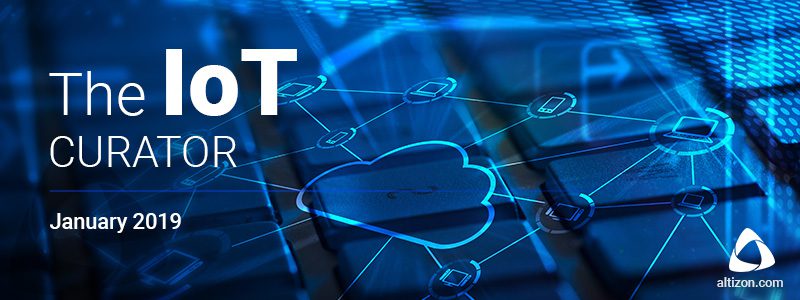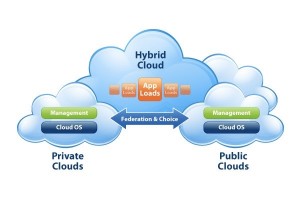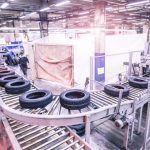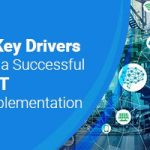IoT Curator – January 2019

Well, 2019 has officially begun and the first month is already behind us. Do you realize? Well, its time to see what are the new things already taking a leap. Continuing on our journey of sharing the most worthy articles for the month, we present you insightful notes on next industrial revolution, what’s happening in the cloud arena, what is giant Google is bringing in intelligent Edge, and lastly a story of digital transformation in oil & gas sector. Happy reading.
Automation: The Next Industrial Revolution
Will artificial intelligence spell Armageddon for the jobs market – or actually boost it?
Artificial intelligence doubtless brings many advantages – ask any research scientist about the benefits of being able to analyze huge datasets thousands of times quicker than a human could – many people are worried that AI (or more accurately, automation using a combination of AI and robotics) could spell the end of their jobs. And depending on what job it is they’re doing, they may well have a point.
According to LinkedIn’s 2017 Emerging Jobs Report, two of the fastest-growing jobs at the moment are ‘machine learning engineer’ and ‘data scientist’. That’s because, while AI might create all sorts of jobs in the future, right now most of the jobs involve creating the AI. Check this blog now.
Public Cloud vs Private Cloud vs Hybrid Cloud: What’s The Difference?
It used to be a cloud or no cloud, now it’s an argument around private, hybrid, public, and multi-cloud architectures. Don’t make the wrong choice
Enterprises IT shops track with this argument for many of the same reasons. Their motivation is not to sell or hold on to a traditional approach to computing, but to maintain control—the agility and cost efficiencies of the public cloud be dammed. It’s intellectually dishonest.
Given today’s’ dynamic and increasingly complex business environment, organizations have to constantly reevaluate their cloud infrastructure, whether Public, Private or Hybrid, to ensure that the cloud delivers on its promise. Since there are different security and management demands for each of these cloud models, organizations have to ensure that they select their application candidates for the cloud wisely so that they can foster innovation and improve agility by leveraging their IT resources optimally. What would your choice be?
The choice between public, private and hybrid cloud solutions depends on a variety of factors, use cases, and limitations. In the real world, it’s not an either/or situation, especially since organizations tend to leverage all three types of cloud solutions considering the inherent value propositions and tradeoffs. This article explores the key differences between the classifications of Public, Private and Hybrid cloud environments.
Google Next 2018: The Great Push Toward Intelligent IoT
Getting dumb sensors connected to the network was just the beginning for the Internet of Things. The next phase involves gathering, processing and leveraging data at the edge.
In the birth and evolution of every emerging technology, the initial victory is merely the existence of that technology. Such has been the case for the Internet of Things. The push, to date, has largely centered on merely attaching sensors to inanimate objects. For the oil and gas industry, that means putting sensors on equipment to increase active rig time. Google wants to help pave the way in edge-based IoT tools, and the Edge TPU (tensor processing unit) is robust enough to handle machine learning (ML) computations on the edge. The TPU will lower costs and power used, and it was created to run ML models created in Google’s TensorFlow platform.
For property management, it means putting sensors in buildings to make them “smart,” so managers can get a read on maintenance and energy issues around the clock. Check out this article.
Digital Transformation and Innovation in the Oil and Gas Sector
The traditional Oil and Gas Industry is being transformed by a new wave of digital disruptive technologies. Developments in technologies such as the cloud, social media, sensors, mobility, artificial intelligence, virtual reality, big data, and analytics are driving trends that have immense potential for Digital Transformation in Oil and Gas Industry.

Industrial IoT has built a bridge between operational technology (OT) and information technology (IT), which enables unstructured, machine-generated data to be analyzed for insights that drive improvements in design and execution, and lead to smarter, faster decision-making and machine-to-machine communications.
Deployment of IoT-based smart energy solutions results in better field communication, reduced cost of maintenance, real-time monitoring, mine automation, and greater safety and security of assets. This leads to higher productivity. Some of the key challenges in oil and gas operations include managing uptime of oil and gas installations. Uptime is critical at oil and gas installations, where the cost of developing a well is $10 per second ($864,000 per day), shutdowns can cost up to $5 million per day and nonproductive time (NPT) costs can exceed $500 million a year. With capacities that barely outstrip demand, delays that extend shutdowns and reduce uptime are unacceptable.
Case Study – Know how one of the leading Oil and Gas Industry leverages Datonis® IoT Platform for Remote Asset Monitoring Solutions. Read More…
The essence of digitization lies in re-platforming core business processes and bringing together transactions and analytics in real time to be smarter, faster, and simpler; achieving supplier collaboration to accelerate growth innovation, harness assets and the Internet of Things (IoT) to drive real-time insights and new business models which will lead to lower costs, greater efficiency, and deeper customer relationships.



